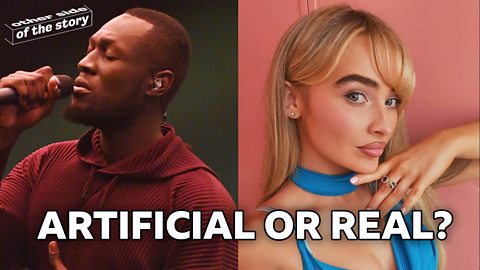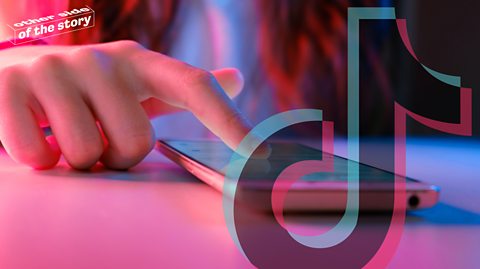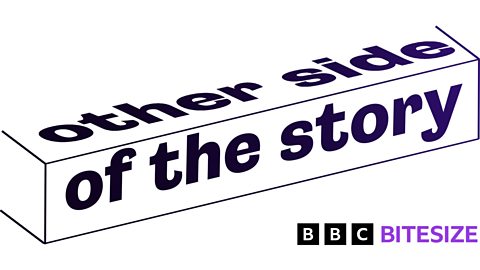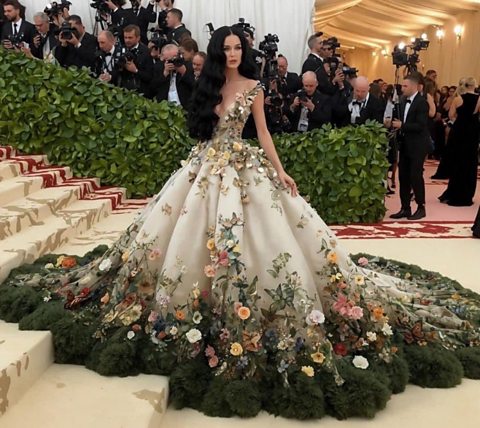 Image source, Taken from X
Image source, Taken from XThis month, an AI generated image of Katy Perry attending the 2024 Met Gala went viral on X.
The post raked in over 16 million views, with many commenters expressing their shock that the photo had been made using AI.
The post was quickly debunked, with confirmation that Perry hadn't attended this year's Gala, and people noticing that the carpet in the picture was actually from the 2018 Met Gala.
But with AI images and deepfakes now reaching new levels of realism, it can often be difficult to tell the difference between a genuine photograph and an AI generated image.
It can be easy to be fooled by an AI image, so we thought we’d take a look at some of the ways that you can spot that an image might be artificial.
3 ways to spot AI images
1. Focus on the details
 Image source, Taken from X
Image source, Taken from X
Image caption, @joinrealmai on X
1 of 2
The quality of AI images is constantly getting better, with the best ones now almost indistinguishable from real photos, but they often have a few giveaways.
AI images are produced using data taken from other photos, so AI programs often struggle with details you may see less frequently in other pictures. Take the picture of Ryan Reynolds, while much of the image looks realistic, the fingers on Ryan's right hand are unnaturally shaped, which is a handy giveaway that the image you're looking at is AI.
If Reynolds' hand isn't enough of a giveaway that the image is made using AI, then a little more visual digging would reveal that the writing on his 'F1 jacket' is complete gibberish. This is a tell-tale sign of AI images, as they often get small details like text or logos wrong.
2. Be wary of perfection

Image caption, @agswaffle on Instagram
1 of 2
Another sure-fire way of identifying an AI image is checking if it looks a little too perfect.
AI images often lack details that can be found in real pictures, leading to these photos having an 'airbrushed' look.
The above image of Ariana Grande may look like the pop superstar, but it lacks any sort of texture and detail in the face – giving the picture an overly crisp, smooth appearance, which in turn gives away its AI origins.
Another giveaway that an image might be AI is the location. AI images are quite often set in a perfect location or fantasy world, and whilst there might genuinely be a flock of flamingos in the background of a photograph, their presence here is just another clue that something isn't quite right.
3. Reverse image search
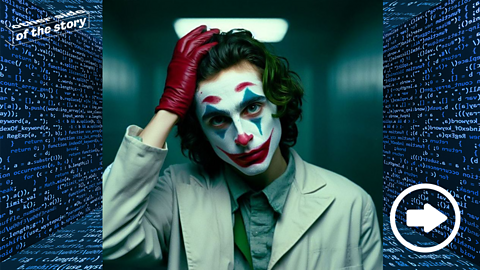
Image caption, @timmy__styles on Instagram
1 of 2
If you've looked at the hands and the face and you're still none the wiser, another good option is to do a reverse image search.
This will identify other places on the internet that the photo exists, and can be very helpful when trying to determine if a picture is AI or real. Generally, AI photos will appear in fewer places than real ones, so will show up less frequently when you run a reverse image search.
A reverse search can also lead you to the original source of the image, which could be clearer in identifying the picture as AI generated, through the use of hashtags or the source's name. Another thing to note is whether the image comes from a trusted website.
Now you've learnt some tricks of the trade, test out your skills with our monthly AI or real quiz.

Not sure if the news you’re seeing on social media is true or false? Can you always tell if the things you see online are real or fake? Learn how to get the other side of the story with our quizzes, videos and explainers.
